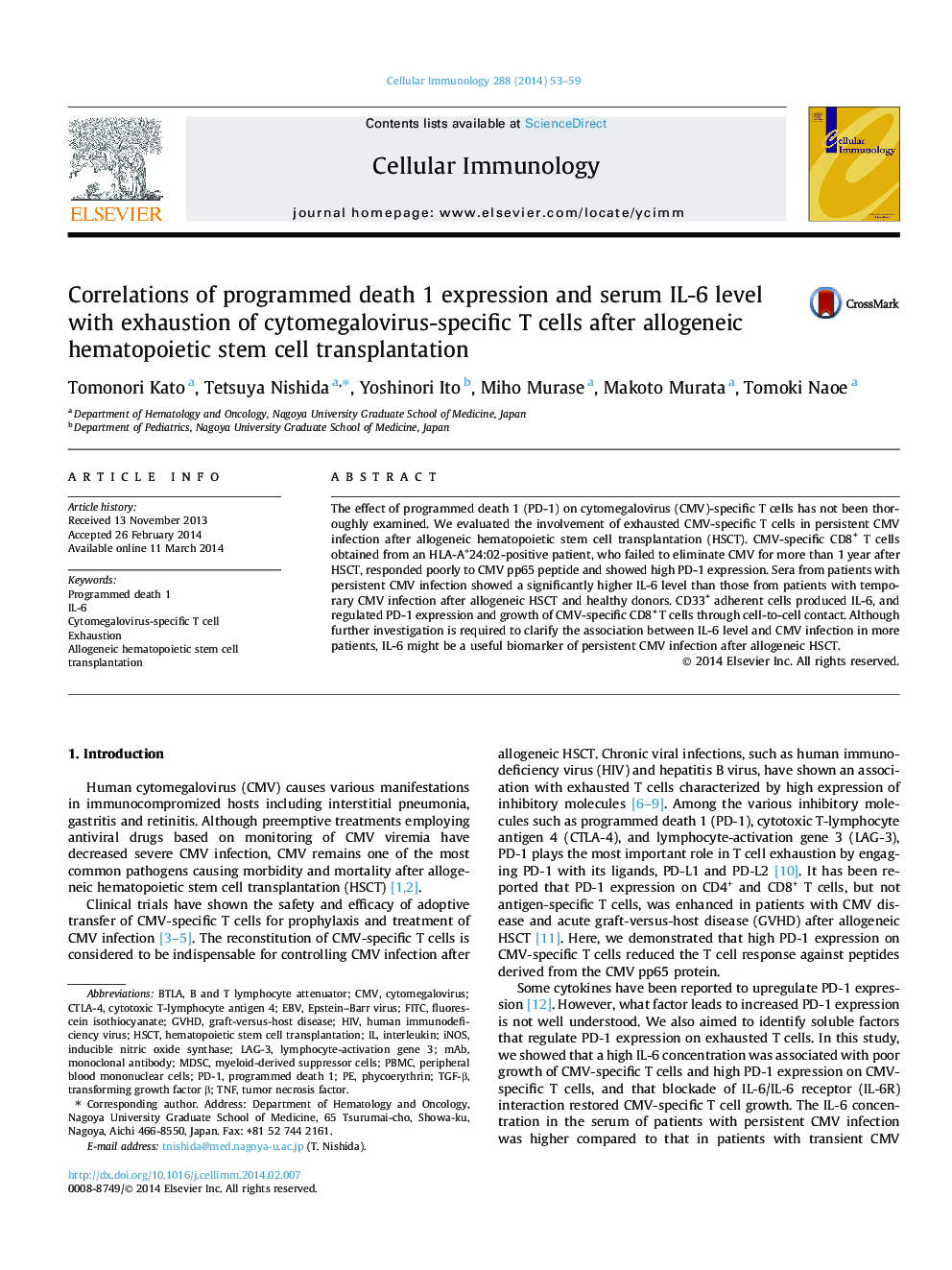| Article ID | Journal | Published Year | Pages | File Type |
|---|---|---|---|---|
| 2167014 | Cellular Immunology | 2014 | 7 Pages |
•Exhausted CMV-specific T cells is involved in persistent CMV infection after HSCT.•IL-6 was associated with exhaustion of CMV-specific T cells.•CD33+ adherent cells produced IL-6 and regulated PD-1 expression.•IL-6 might be a useful biomarker of persistent CMV infection after HSCT.
The effect of programmed death 1 (PD-1) on cytomegalovirus (CMV)-specific T cells has not been thoroughly examined. We evaluated the involvement of exhausted CMV-specific T cells in persistent CMV infection after allogeneic hematopoietic stem cell transplantation (HSCT). CMV-specific CD8+ T cells obtained from an HLA-A∗24:02-positive patient, who failed to eliminate CMV for more than 1 year after HSCT, responded poorly to CMV pp65 peptide and showed high PD-1 expression. Sera from patients with persistent CMV infection showed a significantly higher IL-6 level than those from patients with temporary CMV infection after allogeneic HSCT and healthy donors. CD33+ adherent cells produced IL-6, and regulated PD-1 expression and growth of CMV-specific CD8+ T cells through cell-to-cell contact. Although further investigation is required to clarify the association between IL-6 level and CMV infection in more patients, IL-6 might be a useful biomarker of persistent CMV infection after allogeneic HSCT.
